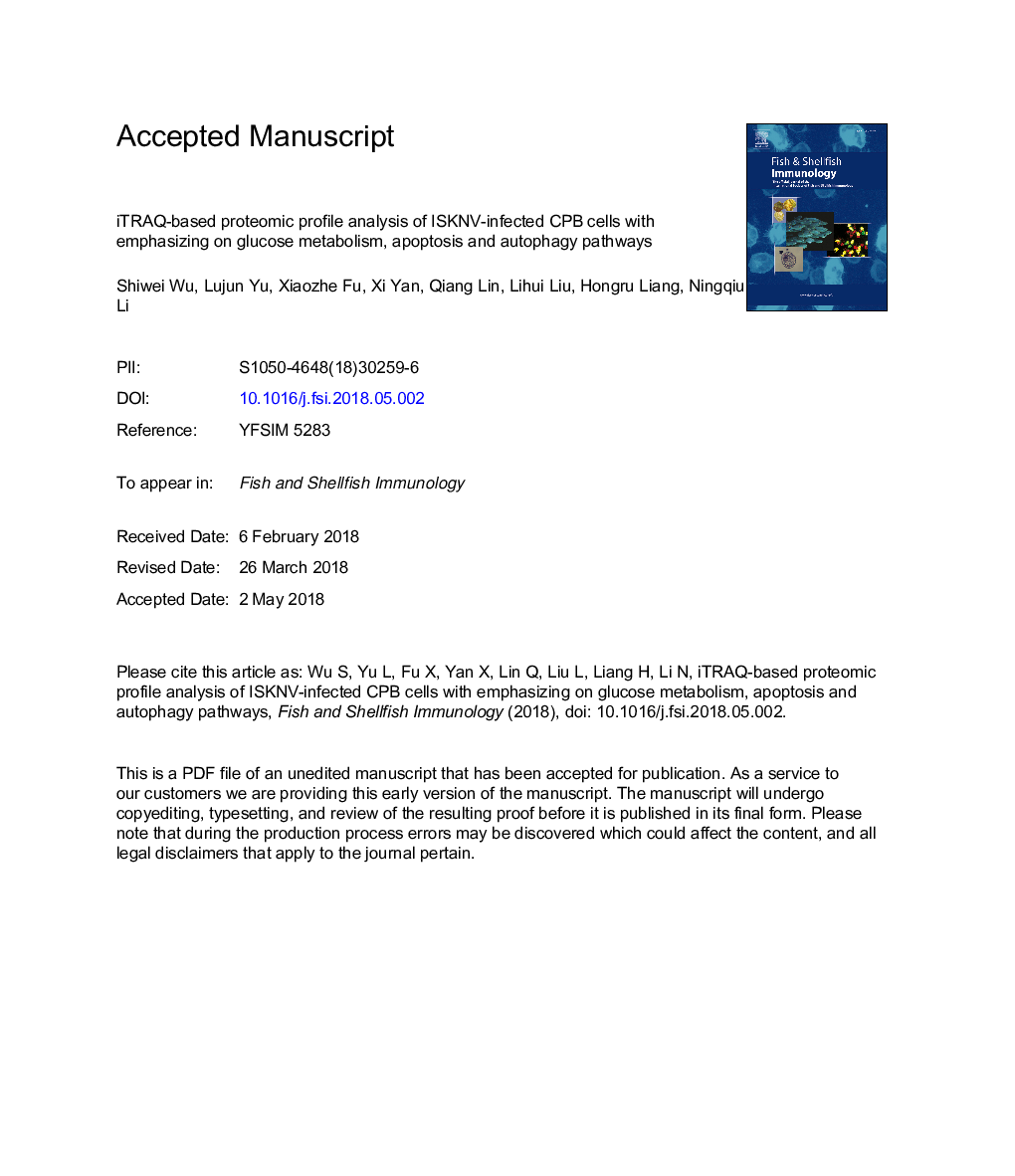| Article ID | Journal | Published Year | Pages | File Type |
|---|---|---|---|---|
| 8498307 | Fish & Shellfish Immunology | 2018 | 30 Pages |
Abstract
Infectious spleen and kidney necrosis virus (ISKNV) has caused significant losses in the cultured mandarin fish (Siniperca chuatsi) industry. The molecular mechanisms that underlie interaction between ISKNV and hosts are not fully understood. In this study, the proteomic profile of CPB cells at progressive time points after ISKNV infection was analyzed by isobaric tags for relative and absolute quantitation (iTRAQ). A total of 2731 proteins corresponding to 6363 novel peptides (false discovery rate <0.01) were identified. In the samples harvested 24â¯h (early-stage) and 72â¯h (late-stage) post-infection, 232 and 199 differentially expressed proteins were identified comparing with mock-infected cells, respectively. Western-blotting analysis of several proteins as G6PDH, β-tubulin and RPL11 were done to validate iTRAQ data. Among those differentially expressed proteins, several glucose metabolism-related enzymes, including glucose-6-phosphate dehydrogenase (G6PDH), pyruvate dehydrogenase phosphatase (PDP) and fumarate hydratase (FH), were up-regulated, while pyruvate dehydrogenase kinase (PDK) and enolase (ENO) were down-regulated at 24â¯h poi, suggesting that ISKNV enhanced glucose metabolism in CPB cells in early-stage infection. Simultaneously, expression of apoptosis-related proteins including Caspase 8, phosphoinositide 3-kinases (PI3Ks), and regulatory-associated protein of mTOR-like isoform X3 changed upon ISKNV infection, indicating that ISKNV induced apoptosis of CPB cells. Autophagy-related proteins including LC3 and PI3Ks were up-regulated at 24â¯h poi, indicating that ISKNV induced autophagy of CPB cells in early-stage infection. These findings may improve the understanding of ISKNV and host interaction and help clarify its pathogenesis mechanisms.
Keywords
Related Topics
Life Sciences
Agricultural and Biological Sciences
Aquatic Science
Authors
Shiwei Wu, Lujun Yu, Xiaozhe Fu, Xi Yan, Qiang Lin, Lihui Liu, Hongru Liang, Ningqiu Li,
